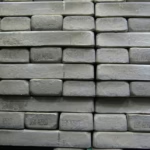From Concept to Creation: The Mechatronics Engineering Design Process Explained
Introduction
Mechatronics engineering is an interdisciplinary field that integrates mechanical engineering, electrical engineering, computer science, and control engineering to design and create smart systems and products. This multidisciplinary approach allows engineers to produce innovative solutions that enhance functionality, efficiency, and usability in an array of applications, from robotics to automated systems. The design process in mechatronics can be complex and multifaceted, typically involving several stages from initial concept to final product realization.
This article aims to elucidate the mechatronics design process, providing insight into the various stages, methodologies, and tools employed by engineers. Drawing upon modern practices and methodologies in engineering design, it will discuss how concepts are transformed into tangible products.
1. Understanding Mechatronics
1.1 Definition of Mechatronics
Mechatronics is defined as the synergistic combination of mechanical engineering, electronics, computer engineering, and control engineering. It encompasses the design and manufacture of intelligent systems and products that are capable of autonomously performing tasks or interacting with users. [^1]
1.2 Importance in Modern Engineering
In today’s rapidly evolving technological landscape, mechatronics plays a pivotal role. It underpins the development of automation systems, smart devices, and robotics. As industries move towards automation and digitalization, mechatronics engineering is essential in delivering efficient solutions that meet contemporary challenges. [^2]
2. The Mechatronics Design Process Overview
The design process in mechatronics can be broadly divided into the following stages:
- System Definition
- Conceptual Design
- Detailed Design
- Prototyping
- Testing and Validation
- Final Production
These stages are iterative, allowing for revisions and improvements based on testing and feedback. The following sections dive deeper into each phase.
3. System Definition
3.1 Requirements Gathering
The first step in the design process is understanding the problem and gathering requirements. This involves consulting stakeholders, assessing market needs, and defining the functionality that the mechatronic system should fulfill. Engineers often create a comprehensive requirements document that serves as a reference throughout the project.
Stakeholders may include end-users, project managers, and manufacturers. The clarity of requirements is crucial as it will guide all subsequent phases.
3.2 Feasibility Analysis
After gathering requirements, engineers must evaluate the feasibility of the project. This includes a technical feasibility study, economic analysis, and assessment of available technologies.
Feasibility studies often incorporate risk assessment, helping engineers understand potential challenges that may arise in later stages, such as technical limitations or financial constraints.
4. Conceptual Design
4.1 Brainstorming Ideas
Once the requirements are clearly defined, the next stage is brainstorming potential design solutions. Engineers may use various techniques, such as mind mapping or collaborative workshops, to explore multiple avenues for the project.
Creativity is essential at this stage, and designers are encouraged to think outside the box, proposing innovative solutions that meet the established requirements.
4.2 Concept Selection
After generating a list of potential concepts, engineers must evaluate each idea based on criteria such as feasibility, cost, and functionality. Tools like Decision Matrices or Pugh Charts can assist in systematically comparing alternatives.
This process often involves iterative discussions and may lead to the combination of several concepts to form a more robust solution.
5. Detailed Design
5.1 Design Development
In the detailed design phase, engineers define the specifications and dimensions of components. This includes creating detailed drawings and computer-aided design (CAD) models that illustrate how various parts fit together.
Various simulations may be run to visualize the interactions between mechanical and electronic components, helping to refine designs and preemptively solve potential issues.
5.2 Selection of Components
Selecting the right components is critical. Engineers must consider factors such as availability, cost, and compatibility with other system parts.
This selection process involves identifying suitable sensors, actuators, microcontrollers, and other essential components required for the system.
5.3 Control System Design
Control systems are integral to mechatronics projects, providing the logic for how a system responds to inputs and achieves desired outputs. Engineers will often choose between various control strategies, including PID control, fuzzy logic, or model predictive control, depending on the system’s requirements.
The design of the control system often involves developing algorithms and programming them into microcontrollers or PLCs.
6. Prototyping
6.1 Rapid Prototyping Techniques
Building a prototype is essential to test the validity of design concepts. Engineers utilize rapid prototyping techniques such as 3D printing, CNC machining, or PCB fabrication to create physical representations of their designs.
The prototype serves as a proof of concept that helps identify weaknesses in design and functionality before moving onto full production.
6.2 Iterative Testing and Refinement
Once a prototype is created, it undergoes rigorous testing to evaluate its performance against the defined requirements. Feedback from testing may lead back to design modifications, creating an iterative cycle of improvements.
This process continues until the design meets all functional and performance specifications satisfactorily.
7. Testing and Validation
7.1 Performance Testing
Upon refining the prototype, engineers perform extensive performance testing to ensure the system operates as intended. This may involve stress testing, safety testing, and functionality testing under various conditions to gather comprehensive data.
7.2 Compliance and Standards Testing
In many cases, products must meet industry standards and regulations. This phase includes ensuring compliance with safety standards, environmental regulations, and performance benchmarks set forth by relevant authorities.
8. Final Production
8.1 Design for Manufacturability (DFM)
Before moving into production, engineers focus on Design for Manufacturability (DFM). This principle emphasizes creating designs that are easy and cost-effective to manufacture.
DFM includes considerations of materials, manufacturing processes, and assembly techniques to optimize the final product for efficiency and cost-effectiveness.
8.2 Full-scale Production
With everything in place, full-scale production begins. This phase transforms the prototype into a market-ready product, often involving setting up assembly lines and sourcing materials at scale.
8.3 Quality Assurance
Quality assurance is a critical final phase that ensures all produced items meet the initial design specifications. Processes involving quality checks and testing will be established to maintain high standards throughout production.
Conclusion
The mechatronics engineering design process is a systematic and iterative approach that evolves from initial concept to final product. With its foundation in interdisciplinary collaboration, the design process emphasizes a clear understanding of requirements, rigorous testing, and a focus on innovation.
As technology progresses, the tools and methodologies used in mechatronics will continue to evolve, fostering the development of advanced systems that enhance and improve our daily lives.
References
[^1]: “Introduction to Mechatronics and Measurements Systems.” McGraw Hill.[^2]: “Mechatronics Systems: Devices, Principles, and Applications.” CRC Press.
Note: The article is structured in a simplified format to convey the overall process. Additional technical details, charts, and graphs would be included in a full-length detailed article.


























Add Comment